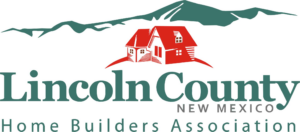(Written by Jack Milarch – NMHBA EVP/CEO – Originally published in the July 2013 Housing Journal)
EPA Mandated Storm Drainage Requirements Coming To A Town Near You
Many of us who have regularly attended the NAHB “board” meetings have heard lots about major efforts by the Federal EPA to force local governments to take a much more active role in keeping storm water run-off clean and free of mud and other pollutants. The federal scheme is to require the city to have a “permit” to pollute the river with any rain water run-off, and then to cap the amount of various types of pollutants the rain water is allowed to carry into the river. Contractors and developers are enlisted into this process by way of the requirement for storm water run-off plans and job site best practices implementation. At times we have paid a lot of attention to this subject, and at times it seems to have disappeared from the “radar”. However, it appears this whole effort is about to be ratcheted up again, especially in the Albuquerque area.
Early in 2012 the City of Albuquerque received notice from the EPA that they were in non-compliance with their “permit” and a new, more invasive and overarching permit was being readied by EPA. A letter from Region 6 (our EPA area oversight) noted “…it was decided that EPA would send the City of Albuquerque (COA) a letter detailing exactly what steps we expect them to take in order to comply with the proposed permit.” The letter goes on to list pages of detailed requirements, many of which include intense regulation of construction sites, both during construction and post construction. For instance one of the requirements is that developers are expected to capture virtually all the rain water that falls onto their sites. Builders are not only expected to build drainage features into their properties, but also to arrange for funding of the ongoing management and maintenance of these features. Builders are expected to provide “as built” plans for any drainage features to the local government, who is in turn required to “sign off” on these features prior to passing final inspection.
Many of our readers are not from the Albuquerque area, and might be wondering why this is important to them. For the answer to that question fast forward to the next phase of the EPA’s plan, which includes their stated goal of taking the “Albuquerque” program statewide. A current draft of a replacement “permit” for the middle Rio Grande water-shed area states “Note that a separate general permit action(s) will be undertaken in the near future to replace the general permits for coverage elsewhere within the State of New Mexico…”
The big picture is that the EPA is transferring responsibility for administering their storm water management program and pollution prevention program, including compliance efforts, to the local governments. EPA still dictates the program details, but they will hold local entities responsible for creating and managing the programs needed to attain the EPA’s goals. EPA’s letter to Albuquerque also notes “While this program is an unfunded mandate, it is essential the COA provide enough funds to (administer this program)”.
Since we are talking about river water pollution, what does the EPA consider pollution to be? Not surprisingly the EPA considers oils, pesticides, nitrates, and fecal matter from dogs and birds to be major river pollutants. But, they also consider dirt, heat, and lack of oxygen to be harmful “pollutants” which they want the cities to be responsible for mitigating. As you can imagine, making sure none of these pollutants reaches the river during a rain storm isn’t easy, or cheap. Which brings us around to the subject of money. Lots of money.
Many areas of the country, and especially those cities around the Chesapeake Bay (which served as the EPA’s “model” for working up this whole program), have been subject to these EPA mandated rules for years now. They have had to figure out how to pay for all this. A number of these areas have some version of a new “rain tax”. These taxes are assessed to property owners based on square feet of “impervious” surface, such as parking lots and roof areas of commercial buildings. Sometimes the “rain tax” includes a flat annual fee per house. Sometimes an entire new overlay government structure is created spanning many local governments within a “water shed” area to collect these taxes and administer the program.
Many of us have spoken to our Congressional delegation members over the years, asking them to change the underlying Clean Water Act so that these programs are less invasive and less onerous. We have routinely been told that won’t happen, so the assumption is that this entire effort will continue to impact us, city by city and town by town. When faced with the gigantic fines embedded within this law, and the heavy leverage of the federal government, our local governments will have very limited power to resist this onslaught. NMHBA is currently analyzing the most recent “permit” draft, which is the EPA’s plan for the middle Rio Grande Water Shed. One of our main goals is to change what obviously are rules and processes for a much wetter and greener eastern U.S. to be more appropriate to the dry, monsoon impacted climate of New Mexico. We are submitting comments to the EPA and will keep our members informed.


